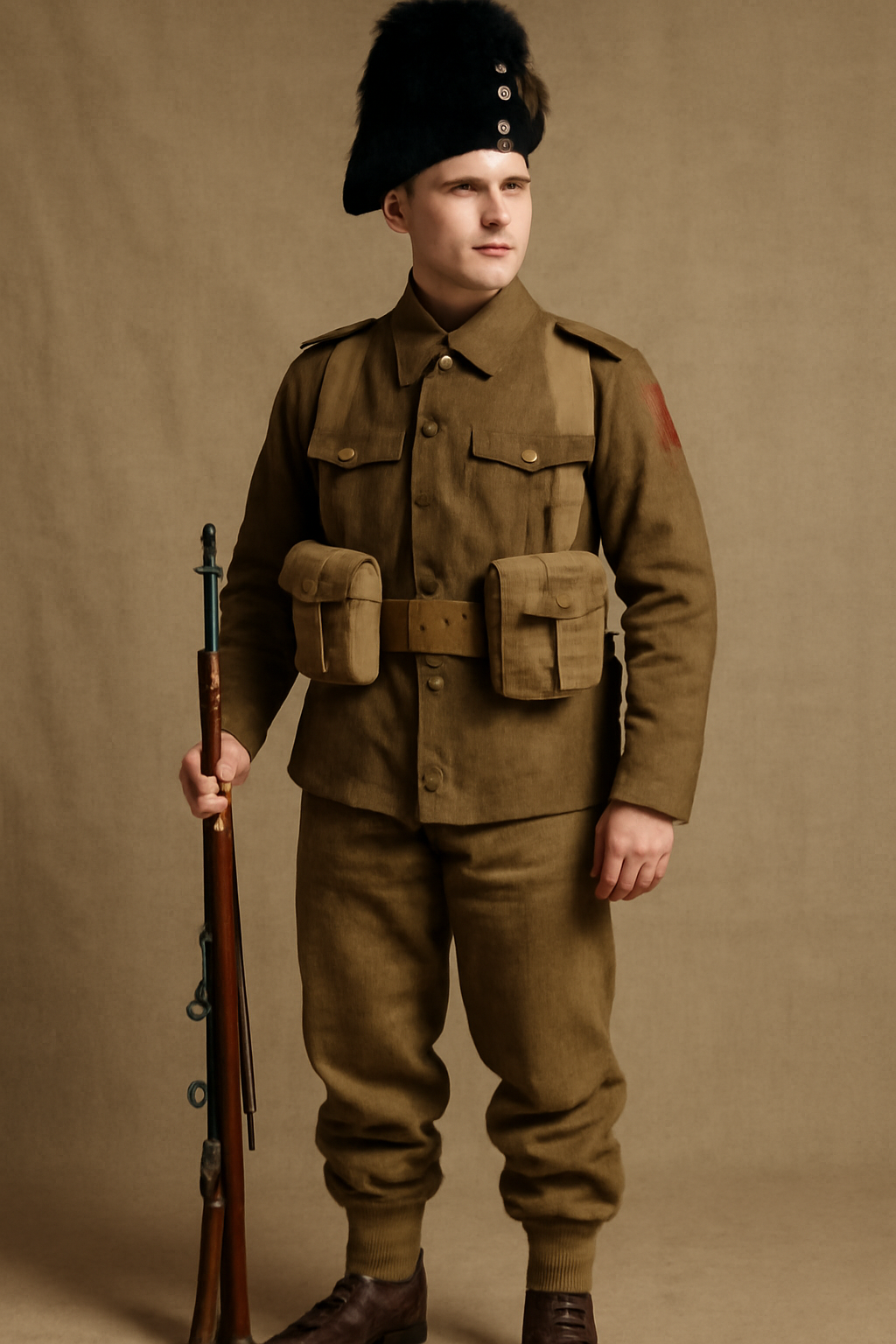
The Ultimate WWII British Uniform Guide: History, Styles & Authentic Details
Published on May 31, 2025
The Ultimate WWII British Uniform Guide: History, Styles & Authentic Details
World War II remains one of the most studied and commemorated conflicts in modern history. Alongside the weapons, battles, and strategies, the uniforms worn by soldiers tell a story of their own—reflecting not just military necessity but also culture, identity, and innovation. Among the Allied powers, British uniforms stand out for their distinctive style and functionality.
In this guide, we’ll explore everything you need to know about WWII British uniforms, including the famous British Guardsman uniform, the role of WW2 trousers, and how British military attire compared to other countries during the war. Whether you’re browsing for authentic replicas or fascinated by military history, this detailed guide will enhance your knowledge.
Understanding WWII Uniforms by Country: Where Britain Stands
Before diving specifically into the British uniform, it’s important to frame the context within the broader landscape of WW2 uniforms by country. Every nation involved in the war developed military clothing suited to their climate, resources, and combat tactics.
- German uniforms were known for their sharp tailoring and use of field-grey wool.
- American uniforms emphasized practicality and mass production.
- Soviet uniforms focused on ruggedness for harsh environments.
- British uniforms, by contrast, combined tradition with adaptability—often reflecting the British Empire’s global reach.
British forces had to prepare for diverse battlefronts, from the cold terrains of Europe to the deserts of North Africa and the jungles of Asia. This influenced the variations seen in their clothing, including the iconic British Guardsman uniform, an emblem of honour and ceremonial prestige.
Key Features of the WWII British Uniform
1. The British Guardsman Uniform
One of the most recognizable British military uniforms is the British Guardsman uniform. Traditionally worn by elite regiments like the Grenadier Guards, Coldstream Guards, and Scots Guards, these uniforms feature:
- Distinctive red tunics with regiment-specific buttons and insignia.
- Bearskin hats that create an imposing silhouette.
- Dark blue or black trousers, often referred to as WW2 trousers in collectors’ circles.
- Precise tailoring reflects centuries-old ceremonial traditions.
Though initially ceremonial, elements of the Guardsman uniform influenced combat attire, particularly in morale and identification.
2. WWII British Combat Uniform
The standard combat uniform worn by British soldiers during WWII was designed for practicality and durability:
- Khaki battledress: This woollen uniform was introduced in the late 1930s, replacing earlier service dresses. It included a short jacket and trousers designed for ease of movement.
- WW2 pants/trousers: Known for their robust construction, these trousers were essential for varied conditions and often lined for warmth.
- Field caps and helmets: The Brodie helmet was standard issue, recognizable by its wide brim, offering protection and a silhouette distinct from German or American helmets.
The Role of WWII Trousers in British Uniforms
Trousers were a vital element, often overlooked but crucial for soldier comfort and performance. The British WW2 trousers or World War 2 trousers were:
- Made from thick wool or cotton blends.
- Designed with reinforced seams to withstand trench warfare.
- Available in various styles depending on rank and unit.
- Adapted for different climates, such as lighter materials for desert campaigns.
Collectors today prize these trousers for their authenticity and craftsmanship, reflecting the rigours of wartime service.
Comparison: British Uniforms vs. Other WW2 Uniforms by Country
When comparing WW2 uniforms by country, British uniforms exhibit a balance of tradition and modern needs. Unlike the highly mechanized German uniforms or the mass-produced American outfits, British attire maintained a connection to regimental pride and ceremonial roots.
The British Guardsman uniform especially symbolizes this blend—representing both the fighting spirit and the historical heritage of British forces.
Collecting and Reproducing Authentic British WW2 Uniforms
For enthusiasts and reenactors, replicating British WWII uniforms accurately is a passion. Key tips for collectors include:
- Focusing on authentic WW2 pants and jackets made from original or period-correct fabrics.
- Paying close attention to regimental insignia, especially for guardsman uniforms.
- Understanding the evolution of British uniforms through the war years to ensure period accuracy.
Conclusion
The WWII British uniform guide is more than a collection of clothing facts—it’s a window into the history, identity, and sacrifices of British soldiers during one of the most pivotal conflicts in history. From the iconic British Guardsman uniform to the practical World War 2 trousers, these uniforms continue to tell stories of courage and resilience.
Whether you’re searching for authentic gear or just curious about military history, understanding the details and significance of British WWII uniforms enriches the legacy of those who wore them.
